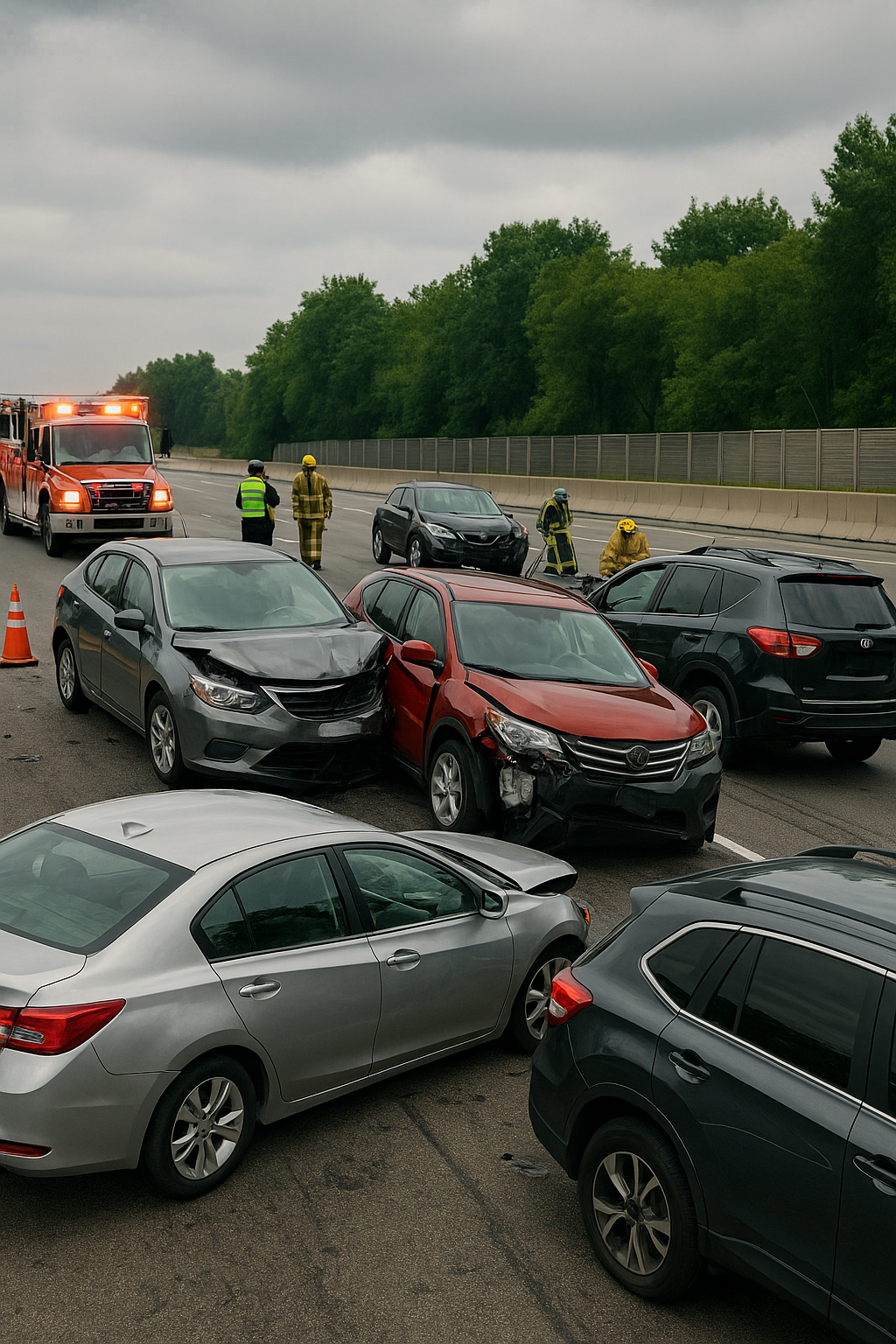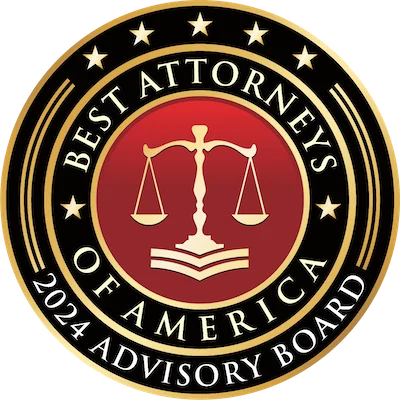A sudden brake, a cacophony of screeching tires, and a chain reaction that leaves multiple vehicles crumpled. In these harrowing moments, the question arises: who’s really at fault when multiple vehicles collide? Understanding liability in multi-car accidents is paramount, not just for the legal professionals at our Boca Raton car accident firm but for everyday drivers as well. The sheer complexity of determining fault in such scenarios can leave victims feeling lost and overwhelmed.
Navigating the intricacies of car accident liability requires clarity, especially when you’re faced with a multi-car pileup. In this article, we’ll examine how liability is determined in chain-reaction car accidents, clarify Florida’s comparative negligence rules, and provide valuable insights into your legal rights after a multi-vehicle collision.
What Is a Multi-Car Pileup?
A multi-car pileup, or chain-reaction accident, often unfolds rapidly on highways or busy roads. These accidents can stem from common causes such as:
- Sudden Stops: A driver brakes unexpectedly, triggering a series of rear-end impacts.
- Weather Conditions: Rain or fog can reduce visibility and traction, leading to accidents.
- Distracted Driving: Mobile phones and in-car distractions can divert attention from the road.
- Tailgating: Close following can result in catastrophic chain reactions when drivers cannot stop in time.
Consider a three-car rear-end collision where the first car, stopping suddenly, is hit by a second car, which is then struck by a third. This type of accident vividly illustrates the potential for confusion surrounding liability.
How Is Fault Determined in a Chain-Reaction Accident?
Determining fault in a chain-reaction accident involves meticulous investigations conducted by both police and insurance companies. Important factors to consider include:
- Physical Evidence: Items such as skid marks, patterns of vehicle damage, and dashcam footage serve as critical evidence.
- Eyewitness Accounts: Statements from those who witnessed the accident can help clarify the sequence of events.
- Reconstructing the Order of Impact: Experts may recreate the accident to discern who initiated the collisions based on physical evidence.
This process is essential for accurately determining liability in complex accident scenarios.
Florida’s Comparative Negligence Rule
Understanding Florida’s modified comparative negligence system is vital for anyone involved in a multi-car collision. Under this rule, each party can bear partial responsibility for the accident, influencing personal injury claims significantly.
After recent changes post-2023, victims can receive compensation even if they are partially at fault, provided they are less than 50% responsible. For example, if a driver is deemed 30% at fault for an accident, their compensation would be reduced by that percentage.
Common Liability Scenarios in Multi-Car Pileups
Liability in multi-car pileups can hinge on various scenarios:
- The Rear-Driver Rule: Typically, the driver who rear-ends another vehicle is presumed at fault.
- Lead Driver Liability: Situations arise where the lead driver may be liable for abrupt stopping, brake checking, or having malfunctioning brake lights.
- Multiple Negligent Drivers: In scenarios featuring multiple culprits, such as a combination of speeding and tailgating, liability may be allocated among several drivers.
Understanding these nuances helps clarify potential outcomes in personal injury claims.
Challenges Victims Face After a Multi-Car Accident
Victims of multi-car accidents often encounter a range of challenges post-collision:
- Dealing with Multiple Insurance Companies: Coordination between different insurers can become a logistical nightmare.
- Denials of Responsibility: Some drivers may shift blame, complicating liability assessments.
- Delayed Compensation: Protracted negotiations can severely delay access to necessary funds for recovery.
Being well-informed about personal injury claims and your rights is crucial in overcoming these hurdles.
What to Do If You’re Involved in a Multi-Car Crash
If you find yourself involved in a multi-car accident, here are immediate steps to take:
- Seek Medical Attention: Your health is paramount; don’t hesitate to consult medical professionals.
- Document the Scene: Take photos, jot down notes, and gather details of involved parties.
- Gather Witness Information: Collect contact details of witnesses, as their accounts can be invaluable.
- Importance of Legal Representation: Consulting with a personal injury lawyer can help you navigate complex liability issues effectively.
A car accident attorney can advocate on your behalf and establish liability accurately.
Conclusion
The intricacies of liability in multi-car pileups can be overwhelming, but understanding these factors is essential for protecting your rights. If you’ve been a victim of such an accident, consider reaching out to a knowledgeable attorney who can offer guidance on your specific situation. Don’t navigate this complex terrain alone, contact Silver Injury Law for a free consultation to ensure your legal rights are safeguarded.




